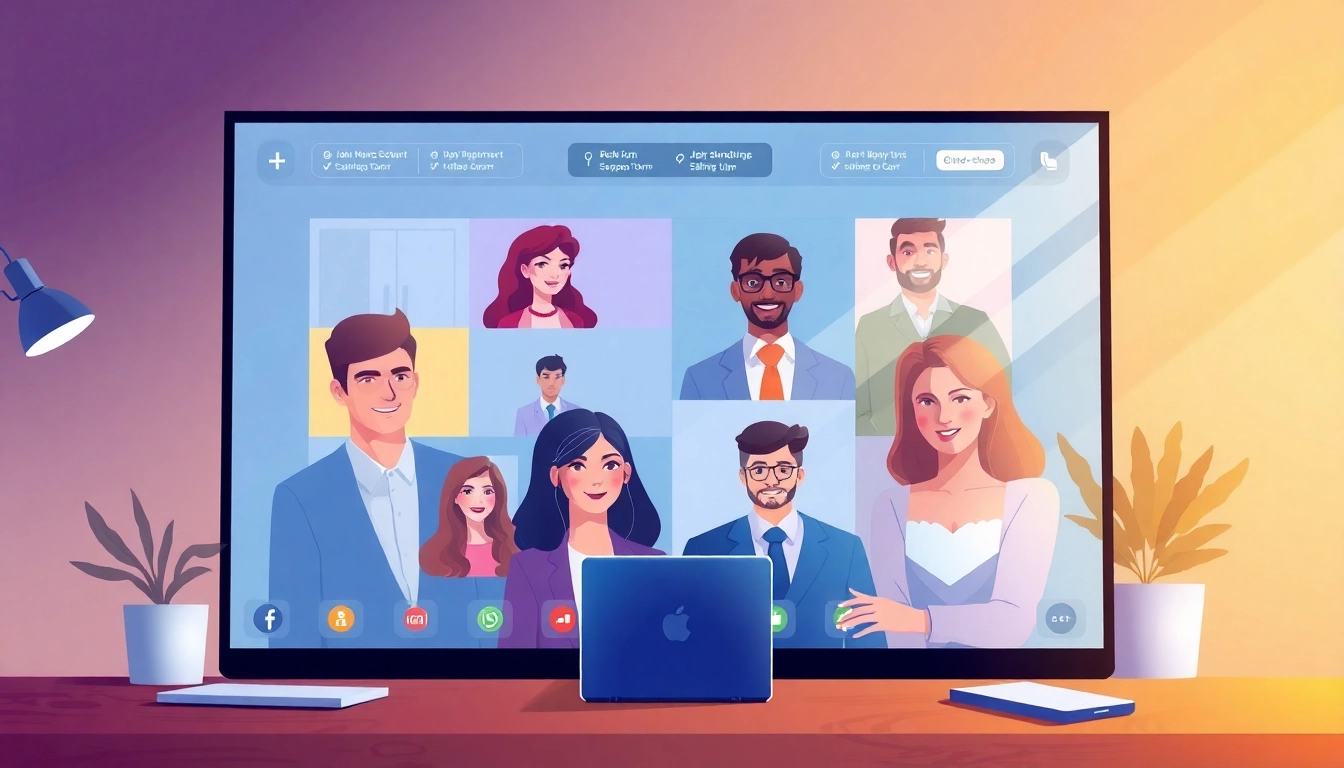Understanding Career Shadowing Online
As the modern workforce adapts to the increasing pace of technological advancement, the concept of career shadowing has transitioned significantly from its traditional in-person format to an accessible online experience. Career shadowing online presents a unique opportunity for individuals to explore their potential career paths, offering insight into various professions without the logistical constraints of physical presence. This article delves into the nuances of online career shadowing, exploring its definition, benefits, participants, and the best practices for effective involvement.
What is Career Shadowing?
Career shadowing is a professional learning experience where individuals observe experienced employees in their work environment, gaining insight into daily tasks, challenges, and workplace culture. Traditionally, this process occurred in person, necessitating travel to a workplace. In recent years, the rise of digital technology has enabled virtual platforms for this practice, allowing individuals to observe and interact with professionals from the comfort of their homes.
Online career shadowing typically includes live video sessions, pre-recorded interviews, webinars, and interactive discussions. These methods allow participants to ask questions and engage with professionals in real-time, making for a richer learning experience. Whether it’s observing a day in the life of a software developer or understanding the responsibilities of a healthcare administrator, online career shadowing broadens one’s perspective on potential career paths.
Benefits of Online Career Shadowing
The benefits of online career shadowing are manifold, offering advantages that cater to a diverse range of individuals, from students to seasoned professionals considering a career transition.
- Accessibility: No geographical barriers impede participation, allowing learners from rural areas or developing nations to gain exposure to fields they might not have readily available locally.
- Flexibility: Online programs offer scheduling variety, letting participants choose sessions that fit their availability without the need for commuting.
- Cost-Effectiveness: With reduced travel and accommodation costs, online shadowing is often more affordable, making it accessible to a broader audience.
- Diverse Opportunities: Various fields and professionals are available for observation, allowing participants to explore multiple interests.
- Comfortable Environment: Being in a familiar and comfortable space can reduce anxiety for participants, especially for those new to professional environments.
Who Can Participate in Online Shadowing?
Career shadowing online is suitable for a wide range of participants, including but not limited to:
- Students: High school, college, and graduate students seeking to inform their career choices.
- Professionals: Individuals considering a career change or advancement, looking to gain insight into new roles.
- Career Changers: Those seeking guidance and insight as they navigate new career landscapes.
- Interns: People wishing to complement their internships with broader insights into their fields.
How to Get Started with Online Shadowing
Getting started with virtual career shadowing is a systematic process that involves identifying opportunities, preparing for the sessions, and using the right tools to enhance the learning experience.
Finding Opportunities for Career Shadowing Online
The first step toward engaging in online career shadowing is identifying platforms and opportunities that offer virtual shadowing experiences. Many organizations, educational institutions, and specialized websites curate lists of shadowing opportunities based on professions. Here are some popular resources:
- Job Shadow – Provides interviews and insightful experiences from professionals in various fields.
- Columbia Career Education – Offers structured virtual job shadowing opportunities.
- Virtual Job Shadow – A platform for career exploration and planning across diverse industries.
- Pre-Health Shadowing – Focused on medical careers, offering various shadowing sessions.
Preparing for Your Virtual Shadowing Session
Once opportunities are identified, preparation is critical for an effective online shadowing experience. Consider the following steps:
- Research the Profession: Familiarize yourself with the field and specific roles you will be observing. Understand common terminology, required qualifications, and industry trends.
- Set Goals: Define what you want to learn from the shadowing session. Are you curious about daily tasks, industry challenges, or the educational path to entering the field?
- Prepare Questions: Develop a list of questions you would like to ask the professional. These should be open-ended to encourage discussion.
- Test Your Technology: Ensure that your internet connection is stable, and that any necessary software (like Zoom or other video conferencing tools) is correctly set up.
Essential Tools for Effective Online Shadowing
Engaging fully during your online shadowing session requires the right tools to facilitate interaction:
- Video Conferencing Software: Tools like Zoom, Microsoft Teams, or Google Meet allow for live interaction with your shadowing professional.
- Note-Taking Applications: Use digital note-taking tools (like OneNote, Evernote, or Notion) to document your observations and insights during the session.
- Recording Tools: If permitted, use screen recording software to capture valuable segments of the session for later review.
- Task Management Tools: Applications like Trello or Asana can help organize your follow-up tasks and notes post-shadowing experience.
Best Practices for an Effective Shadowing Experience
To maximize your learning during an online shadowing session, adhering to best practices is essential. This section outlines strategies to ensure an engaging and informative experience.
Making the Most of Your Online Shadowing Time
Being proactive during your session is key. Here are ways to engage effectively:
- Be Punctual: Logging in on time shows respect for the professional’s schedule and sets a positive tone for the meeting.
- Engage Actively: Participate in discussions, ask questions when appropriate, and share your insights to foster a two-way conversation.
- Show Enthusiasm: Demonstrate interest and appreciation for the time the professional is dedicating to you, which may encourage them to offer deeper insights and advice.
Questions to Ask During Your Shadowing
Crafting the right questions can lead to enlightening discussions. Consider asking about:
- The professional’s typical day-to-day responsibilities.
- Challenges they face in their role and the industry at large.
- Key skills and attributes they believe are critical for success in their field.
- Advice they would give someone looking to enter the profession.
- Opportunities for advancement and ongoing education in their field.
Follow-Up Strategies for Career Networking
Post-shadowing follow-ups are vital for solidifying connections. Here are some effective strategies:
- Thank You Message: Send a thank you email expressing your gratitude for their time and insights. Personalize it by mentioning specific things you learned.
- Stay Connected: If appropriate, connect on professional networking platforms like LinkedIn, maintaining an open line of communication.
- Seek Further Guidance: Feel free to ask if they would be open to future questions or advice as you progress in your journey.
Challenges of Career Shadowing Online
While online career shadowing presents numerous advantages, it is not without challenges. Recognizing and addressing these obstacles is crucial for a successful experience.
Common Obstacles in Virtual Shadowing
Participants in online career shadowing may encounter problems such as:
- Limited Interaction: Virtual settings sometimes inhibit spontaneous conversations that can spark deeper insights.
- Distractions: At home, participants may face interruptions from family members or the surrounding environment, detracting from the focus of the session.
- Technical Difficulties: Poor internet connectivity, hardware issues, or software malfunctions can disrupt the session flow.
Overcoming Technical Issues
Proactive measures can help mitigate technical challenges:
- Conduct a test run of the technology prior to your session.
- Choose a quiet location for the meeting to minimize distractions.
- Have a backup plan, such as an alternative communication channel—like a phone call—if video connections fail.
How to Stay Engaged Virtually
Maintaining engagement can be more challenging in a virtual environment. Consider the following tactics:
- Use Video: Whenever possible, enable your video during discussions to foster a face-to-face atmosphere.
- Interactive Components: If the session permits, engage in activities or discussions that allow you to actively partake, keeping the session dynamic.
- Mindfulness: Practice active listening skills. Acknowledge points made by the professional and express your reflections to show that you are fully present.
Success Stories and Case Studies
Various individuals have benefited from online career shadowing, providing compelling proof of its effectiveness in shaping careers and guiding choices. This section shares impactful stories and testimonials.
Real-Life Examples of Effective Shadowing
Many professionals credit online career shadowing for their successful career decisions. For instance:
- A recent college graduate found clarity in their career path after shadowing a marketing director remotely, leading them to pursue a master’s degree in digital marketing.
- A high school student considering a medical career engaged in a series of virtual shadowing sessions with different healthcare professionals, ultimately deciding to pursue nursing.
Impact of Career Shadowing on Career Choices
Career shadowing has influenced a myriad of decisions across fields. Insights gained from observing industry professionals can illuminate the nuances of various roles, aiding participants in making more informed career choices. For example:
- Students expressed feeling more prepared for college and career pathways after experiencing the day-to-day realities of occupations they were interested in pursuing.
- Professionals transitioning to new roles frequently cite that their shadowing experiences clarified expectations and skill requirements, easing the transition process.
Testimonials from Participants and Professionals
Feedback from participants highlights positive experiences with online shadowing:
“I learned more in a two-hour virtual session than I did in an entire semester of career counseling. It truly opened my eyes to a field I had never considered!” – MBA Student.
“Having students shadow me virtually allowed me to reflect on my journey and share insights that could help the next generation. It’s a fulfilling experience!” – Senior Executive.
Conclusion
Online career shadowing stands as an innovative approach to career exploration, offering substantial opportunities for growth and understanding of the workforce. Its numerous benefits, combined with accessible tools and strategies, create an enriching experience for participants. By following best practices and overcoming challenges, individuals can maximize their engagement and learning outcomes. As the job market continues evolving, embracing virtual shadowing can equip aspiring professionals with the knowledge and networks needed to navigate their future with confidence.



